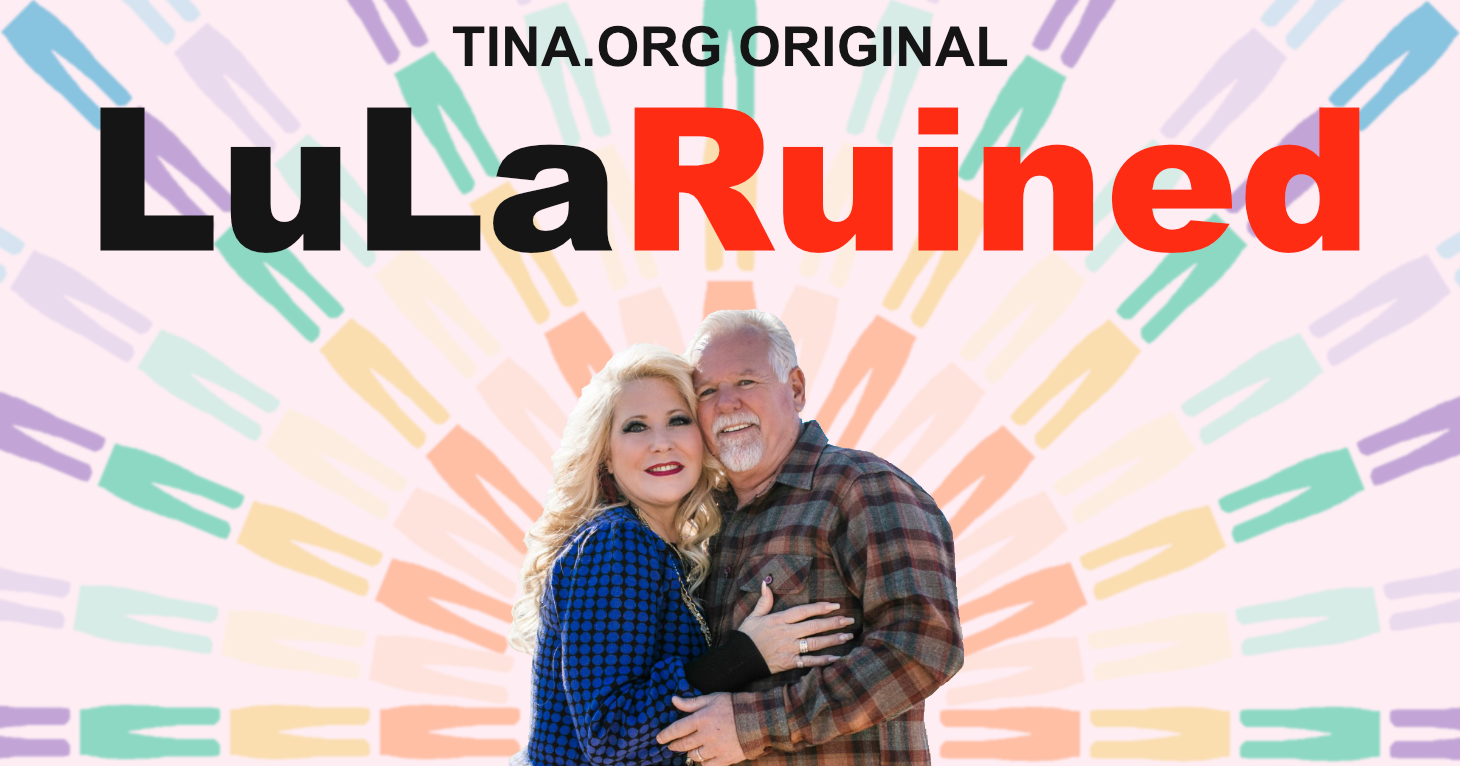
LuLaRich or LuLaRuined?
New documentary explores the rise and fall of LuLaRoe.
When hedge-fund manager William Ackman declared last December that he had bet $1 billion against Herbalife because he believed it to be an illegal An inherently deceptive form of multi-level marketing where participants are told they’ll get paid for recruiting other participants, and not necessarily for selling products or services. Typically, participants must pay some sort of initial investment in order to join, and will then earn a commission for each participant they recruit. Unfortunately for the unsuspecting consumers, pyramid schemes are doomed to collapse because the number of potential participants is limited., all too many people thought that it was just a matter of months before the Established in 1914 under President Woodrow Wilson, the FTC is the United States government’s primary regulatory authority in the area of consumer protection and anti-competitive business practices in the marketplace. Its Bureau of Consumer Protection assumes the lead in the Commission’s efforts to eliminate deceptive advertising and fraudulent business practices at work in the economy. would take action. Such assumptions were clearly wrong, and quite frankly, naïve.
First, when the FTC points its finger at a company and alleges pyramid scheme, the cases generally go one of two ways: a quick settlement and the disappearance of the company; or a long, painful fight to the death.
This is so because pyramid schemes cannot be fixed. The bad parts cannot be excised from the rest of the organization, as it is not a viable retail organization to begin with. The only remedy for a fraudulent pyramid scheme is the complete and irreversible destruction of the company. As a result, in those cases where the company does not immediately lie down and die, such accusations inevitably lead to a long, protracted legal battle that consumes an obscene amount of money and a multitude of man-hours.
Take for example the Amway case, which was one of the FTC’s earliest actions against a multi-level marketing organization (“Multilevel Marketing – a way of distributing products or services in which the distributors earn income from their own retail sales and from retail sales made by their direct and indirect recruits.”). The FTC brought a five-count complaint against Amway in 1975 alleging, among other things, that it was a pyramid scheme. Two years later, after extensive discovery, the case was heard before an administration law judge. At the hearing, 150 witnesses testified, there were over 1,000 exhibits, and the trial transcript was almost 7,000 pages long. A final order was not issued in the case until 1979 finding that the Amway Corporation was in fact not a pyramid scheme.
Since that time, the FTC has brought at least 24 complaints alleging that a company was operating a pyramid scheme. Of those cases, the FTC has a record of two trial wins, no losses, and 20 settlements, with two cases currently pending. The two active cases are FTC, et al. v. Fortune Hi-Tech Marketing, Inc., et al., in which the parties are currently in settlement negotiations, and FTC v. BurnLounge, et al., which the FTC won at the trial court level and it is now on appeal to the Ninth Circuit.
The FTC filed its lawsuit against BurnLounge in June 2007 alleging that the MLM was a pyramid scheme. After two years of discovery, there was a nine-day A trial in which the judge (as opposed to a jury) hears the case and renders a decision on the facts as well as the law.. Then it took an additional three years for the court to issue its final judgment – that BurnLounge was indeed operating a pyramid scheme, and ordering the company to pay over $16 million in damages. BurnLounge then appealed the decision.
So here we are, six years later and the case is still far from over. In fact, the Ninth Circuit won’t hear oral argument in the case until December of this year, and then it could take up to a year before it renders a decision. And if BurnLounge loses on appeal, which it will in all likelihood, the company still has appellate options available to it. Bottom line is that this case may be years away from final resolution.
In the Fortune Hi-Tech case, the FTC — as it has done with many of its pyramid cases prior to filing a complaint — petitioned for and was granted an ex parte temporary restraining order against the company freezing all of its assets. Not long after that the parties entered into settlement discussions, which remain ongoing. As such, it appears that this case is likely to settle.
While the vast majority of MLMs that the FTC has accused of being pyramid schemes have settled their cases, it is clear that Herbalife has no intention of slipping away quietly into the night. So there can be no doubt that if the FTC brings an action against Herbalife, the company will challenge the FTC every step of the way. The FTC knows this and understands the huge outlay of resources it would take to mount a case against Herbalife, a multi-billion dollar organization. Consequently, it is not likely that the FTC will even consider such a legal battle until it has resolved its cases against BurnLounge and Fortune Hi-Tech.
Second, and more importantly, the law on what is and is not a pyramid scheme is murky. This means that the FTC would not enter a legal battle with Herbalife with an assured win. As such, the prudent course for the FTC is to hold off considering whether to attack Herbalife until it finishes its long-running battle with BurnLounge and obtains further appellate authority on what is and is not a pyramid scheme. A favorable circuit court decision in Burnlounge would provide the FTC with a much-needed weapon to challenge Herbalife’s business structure.
One of the reasons BurnLounge is such an important case is that the trial court, in its final judgment order, held that:
“Prohibited Marketing Scheme” means an illegal pyramid sales scheme … or other marketing plan or program in which participants pay money or valuable consideration in return for which they obtain the right to receive rewards for recruiting other participants into the program, (emphasis added) and those rewards are unrelated to the sale of products or services to ultimate users. For purposes of this definition, “sale of products or services to ultimate users” does not include sales to other participants or recruits or to the participants’ own accounts. (Update: The U.S. Court of Appeals for the Ninth Circuit upheld the lower court’s findings on June 2 2014, saying: “We agree with the district court that BurnLounge was an illegal pyramid scheme . . . because BurnLounge’s focus was recruitment, and because the rewards it paid in the form of cash bonuses were tied to recruitment rather than the sale of merchandise.”)
According to Jeffrey Babener, an attorney who has served as legal advisor to NYSE direct selling companies Avon, Herbalife, USANA and NuSkin, “such language, if applied to the multi-billion dollar direct sales industry, could easily create legal challenge to many of the world’s leading direct selling companies, many in business for decades and some even publicly traded on stock exchanges.” In addition, he said that the highlighted portion of the court’s order, “if adopted by other courts, is a ‘game changer’ in analysis of pyramid vs. legitimate.”
This past summer, Herbalife made a similar statement in the case of Bostick, et al. v. Herbalife International of America, Inc., et al. in its unsuccessful attempt to have the case dismissed. Herbalife stated that if there was a legal holding that “sales to distributors for their own consumption may not be counted as a sale to ‘ultimate users’ [it] would mean that no multi-level marketing firm could ever survive section 327 [California’s pyramid law] scrutiny.”
That legal holding came last Friday when the judge in the Bostick case ruled that “downline distributors are not ultimate users” for purposes of determining whether an MLM is a pyramid scheme.
Where does all this leave Ackman and his $1 billion bet against Herbalife? According to the Wall Street Journal, Ackman has “shifted some of his short bet on Herbalife into A put option gives an investor the right to sell stock at a set price over a designated time frame, but the options expire at a certain point., a move that could cut his risks.” Let’s just hope that Ackman’s put options don’t expire for many years to come, because in all likelihood it will be several years before the FTC will be properly armed and ready to think about taking on Herbalife.
This blog was updated on 6/10/2014.
New documentary explores the rise and fall of LuLaRoe.
FTC using every arrow in its quiver to go after bad actors.
Tell your member of Congress to #MakeScammersPay


